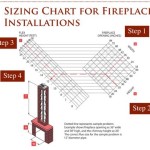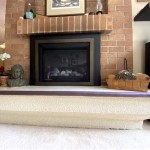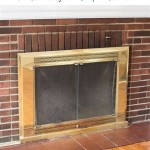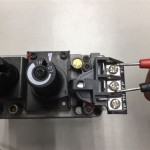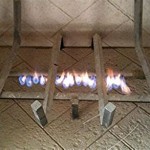Insulating A Gas Fireplace Insert
Gas fireplace inserts offer an efficient and aesthetically pleasing way to heat a home. They are designed to fit into an existing fireplace opening, converting a traditional wood-burning fireplace into a cleaner and more controllable heating source. However, even with their inherent energy efficiency, heat loss can still occur through the surrounding structure, particularly in older homes or those with inadequate insulation. Properly insulating a gas fireplace insert can significantly improve its performance, reduce energy costs, and enhance overall comfort.
Effective insulation minimizes heat transfer through the fireplace surround, chimney, and adjacent walls. Without proper insulation, much of the heat generated by the insert can be lost to the outdoors, especially during colder months. This leads to increased energy consumption as the system must work harder to maintain the desired temperature. Furthermore, inadequate insulation can contribute to uncomfortable drafts and uneven heating throughout the home.
Several factors influence the need for and effectiveness of insulation. The age and construction of the house play a significant role. Older homes often lack the insulation standards of modern construction. The type of fireplace insert itself also matters; some models are designed with built-in insulation features, while others require additional measures. The climate and typical heating demands of the region are also crucial considerations. Areas with severe winters will benefit most dramatically from enhanced insulation.
Evaluating the Need for Insulation
The first step in insulating a gas fireplace insert is to assess the current insulation levels and identify areas where heat loss is occurring. A simple visual inspection can reveal obvious gaps or cracks around the insert and chimney. Feeling for drafts around the fireplace opening can also indicate areas of air leakage. A more thorough evaluation may involve using an infrared thermometer to detect temperature variations on the walls surrounding the fireplace. Significant temperature differences suggest inadequate insulation.
Another indicator of poor insulation is unusually high heating bills. If energy consumption seems disproportionate to the actual heating needs, it could be a sign that heat is being lost through the fireplace surround. It is also beneficial to consult with a qualified HVAC technician or home energy auditor. These professionals can conduct a comprehensive energy audit and provide specific recommendations for improving insulation.
The age of the existing fireplace and chimney can also provide clues about the need for insulation. Older brick chimneys, in particular, are prone to heat loss due to their porous nature and often lack of an adequate liner. Addressing these issues may involve installing a chimney liner and adding insulation around the liner to prevent heat from escaping.
Choosing the Right Insulation Materials
Selecting appropriate insulation materials is crucial for maximizing energy efficiency and ensuring safety. Several types of insulation are suitable for use around gas fireplace inserts, each offering unique advantages and disadvantages. It is vital to consider the fire resistance, R-value (a measure of thermal resistance), and ease of installation when making a selection.
One commonly used material is mineral wool, also known as rock wool or slag wool. Mineral wool is a good insulator with excellent fire-resistant properties. It can withstand high temperatures without melting or emitting harmful fumes. It is typically available in batts or rolls, making it relatively easy to install in the cavity surrounding the fireplace insert.
Another option is fiberglass insulation, which is widely available and relatively inexpensive. However, fiberglass is not as fire-resistant as mineral wool and may require additional fireproofing measures. It is important to use fiberglass insulation that is specifically designed for high-temperature applications. Furthermore, proper installation is crucial to avoid gaps or compression, which can reduce its effectiveness.
Reflective insulation, such as foil-faced rigid foam boards, can also be used in conjunction with other insulation materials. Reflective insulation works by reflecting radiant heat back into the room, further reducing heat loss. These boards can be cut to size and fitted around the fireplace insert, providing an additional layer of thermal protection.
It is very important to consult local building codes and manufacturer’s specifications regarding acceptable insulation materials and clearances around gas fireplaces. Some materials may be prohibited or require specific installation techniques to ensure safety and compliance.
Effective Insulation Techniques
Proper installation techniques are essential for achieving optimal insulation performance. The specific methods will vary depending on the type of insulation material used and the construction of the fireplace surround. However, some general guidelines apply to most installations.
Before starting any insulation work, ensure that the gas fireplace insert is turned off and allowed to cool completely. Remove any flammable materials from the vicinity of the fireplace. Clean the area thoroughly to remove dust, debris, and any loose mortar or brick. This will ensure a good seal between the insulation and the surrounding surfaces.
When installing batt or roll insulation, carefully measure and cut the material to fit snugly into the cavity around the fireplace insert. Avoid compressing the insulation, as this will reduce its R-value. Use a sharp utility knife to make clean cuts and ensure a tight fit around pipes, wires, and other obstructions.
When using rigid foam board insulation, cut the boards to size and secure them to the surrounding surfaces with construction adhesive or mechanical fasteners. Seal the seams between the boards with foil tape to prevent air leakage. Pay particular attention to gaps around the chimney and any other openings.
Ensure that there is adequate clearance between the insulation and any combustible materials, such as wood framing or wiring. Follow the manufacturer’s recommendations for minimum clearances. If necessary, use fire-resistant materials, such as metal shields or fire-rated drywall, to protect combustible surfaces.
After installing the insulation, carefully inspect the area to ensure that there are no gaps or air leaks. Use caulk or sealant to seal any cracks or openings around the fireplace insert, chimney, and adjacent walls. This will prevent drafts and further reduce heat loss.

Walls Behind Fireplaces Building America Solution Center

Electric Fireplace Insulation An Ultimate Guide Inserts Guy
Insulation Around A Fireplace Insert Hearth Com Forums Home

Rutland 10 Ft X 1 2 In Fiberglass Fireplace Insert Insulation 105 The Home Depot
Insulating Around Direct Vent Fireplace Hearth Com Forums Home

How To Insulate Prefab Chimney Interior Wall Greenbuildingadvisor

Chimney Liners Usa Fireplace Insert Venting Information

Walls Behind Fireplaces Building America Solution Center
Finally Got Around To Insulating My Fireplace Hearth Com Forums Home

Fixing A Draft Fireplace Doghouse Kickout Diy Home Improvement Forum

